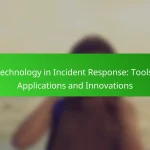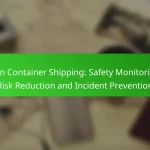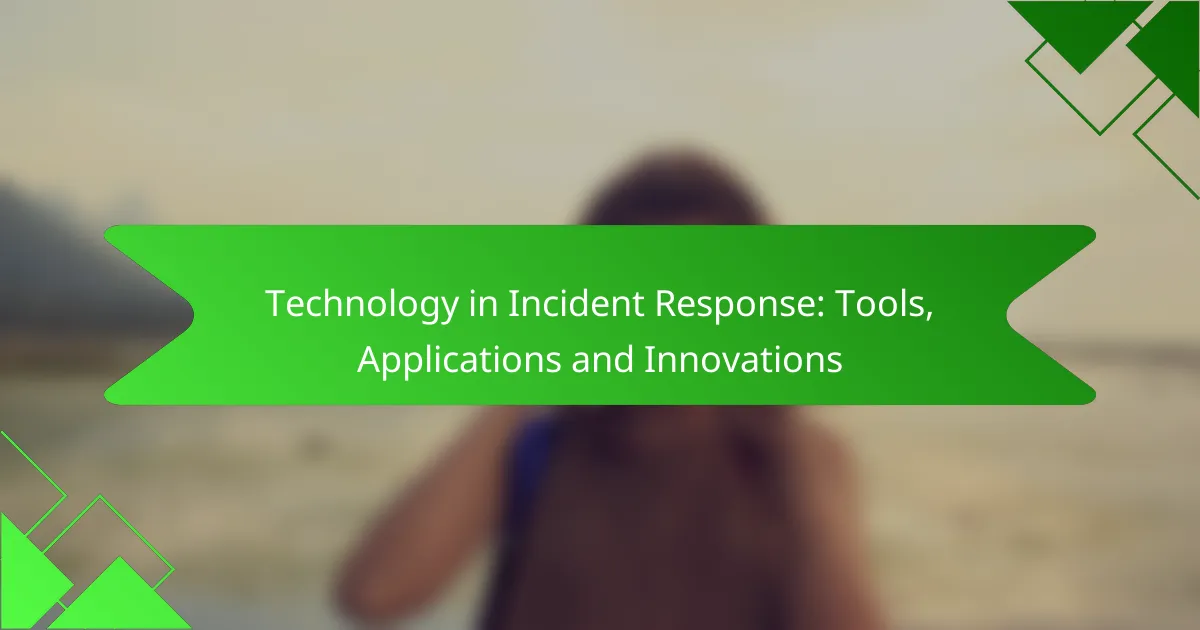In the rapidly evolving landscape of cybersecurity, technology plays a crucial role in enhancing incident response capabilities. By utilizing advanced tools and applications, organizations can streamline the detection, analysis, and remediation of security incidents, ensuring a more effective response. Implementing a structured approach with dedicated teams and integrated solutions allows for improved communication and faster recovery from potential threats.
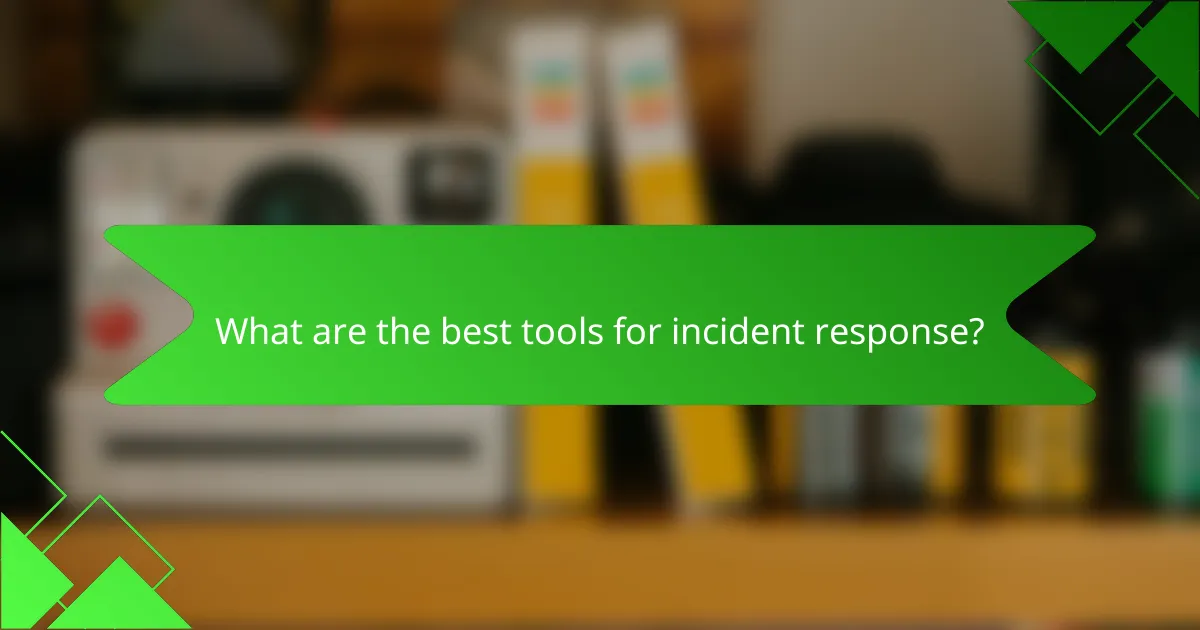
What are the best tools for incident response?
The best tools for incident response streamline detection, analysis, and remediation of security incidents. Key solutions include data analysis platforms, orchestration tools, threat detection systems, endpoint protection software, and incident management solutions.
Splunk for data analysis
Splunk excels in data analysis by aggregating and visualizing machine-generated data from various sources. It enables security teams to quickly identify anomalies and patterns that may indicate security incidents.
Utilizing Splunk, organizations can set up dashboards and alerts tailored to their specific needs, allowing for real-time monitoring. This flexibility makes it a preferred choice for many enterprises looking to enhance their incident response capabilities.
IBM Resilient for orchestration
IBM Resilient is designed for orchestration, helping teams automate workflows and coordinate responses to incidents. It integrates with various security tools to streamline processes and improve efficiency during an incident.
By using IBM Resilient, organizations can create playbooks that guide responders through predefined steps, ensuring a consistent and effective approach. This reduces the time to respond and minimizes the impact of incidents.
FireEye for threat detection
FireEye specializes in threat detection by providing advanced analytics and threat intelligence. Its solutions help organizations identify and respond to sophisticated cyber threats in real-time.
FireEye’s platform includes features like behavioral analysis and machine learning, which enhance its ability to detect emerging threats. This proactive approach is essential for organizations aiming to stay ahead of potential attacks.
CrowdStrike for endpoint protection
CrowdStrike offers robust endpoint protection that combines antivirus capabilities with advanced threat detection. Its cloud-native architecture allows for rapid deployment and scalability across various environments.
With CrowdStrike, organizations benefit from continuous monitoring and real-time threat intelligence, which helps in quickly identifying and neutralizing threats at the endpoint level. This is crucial for maintaining a strong security posture.
ServiceNow for incident management
ServiceNow provides a comprehensive incident management solution that helps organizations track and resolve incidents efficiently. Its platform integrates with various IT and security tools to ensure a cohesive response strategy.
By leveraging ServiceNow, teams can automate ticketing, prioritize incidents based on severity, and maintain clear communication throughout the incident lifecycle. This structured approach enhances overall incident response effectiveness.
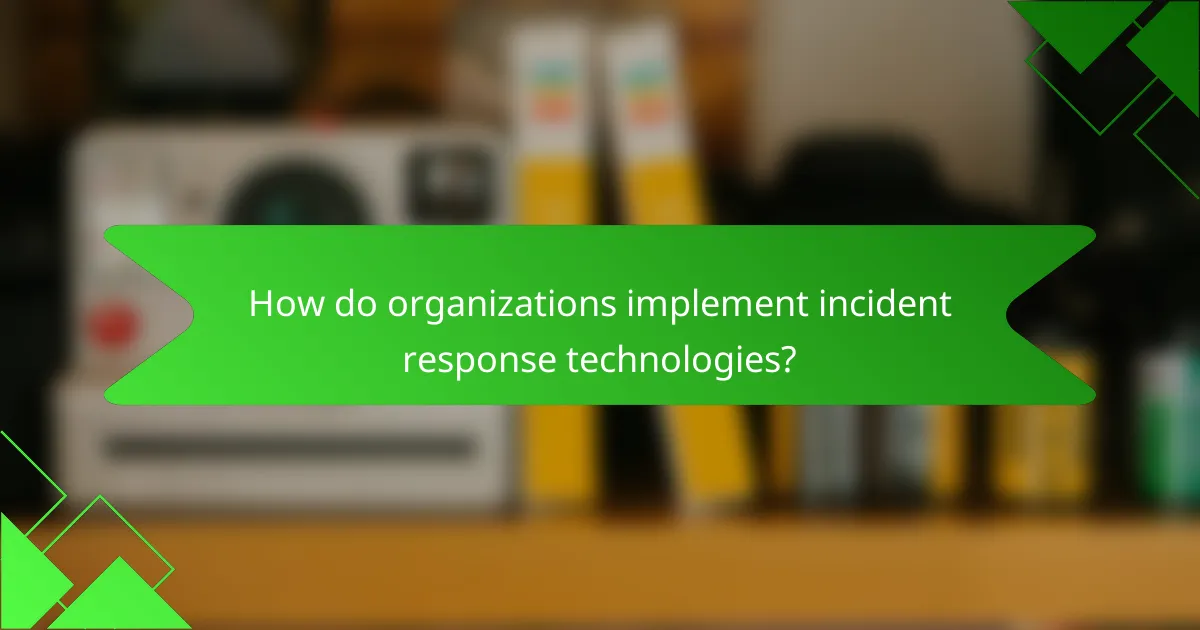
How do organizations implement incident response technologies?
Organizations implement incident response technologies by establishing a structured approach that includes forming dedicated teams, integrating various tools, and conducting regular training. This systematic implementation ensures that they can effectively detect, respond to, and recover from incidents while minimizing potential damage.
Establishing an incident response team
Creating an incident response team is crucial for effective incident management. This team typically consists of members from IT, security, legal, and communications, ensuring diverse expertise. Organizations should define clear roles and responsibilities within the team to streamline decision-making during incidents.
It’s beneficial to appoint a team leader who can coordinate efforts and serve as the primary point of contact. Regular meetings and updates help maintain team readiness and ensure that all members are aware of their duties and the latest incident response protocols.
Integrating tools with existing systems
Integrating incident response tools with existing IT systems is essential for seamless operations. Organizations should assess their current infrastructure and identify tools that can enhance their incident response capabilities without causing disruptions. Common tools include Security Information and Event Management (SIEM) systems, intrusion detection systems, and endpoint protection solutions.
When integrating tools, consider compatibility and ease of use. A well-integrated system allows for automated alerts and streamlined workflows, reducing response times. Regularly reviewing and updating these integrations ensures they remain effective as technology evolves.
Conducting training and simulations
Training and simulations are vital for preparing the incident response team to handle real-world scenarios. Organizations should conduct regular training sessions that cover the latest threats and response strategies. This helps team members stay informed and ready to act swiftly during an incident.
Simulations, such as tabletop exercises or live drills, provide practical experience and highlight areas for improvement. These exercises should mimic potential incidents relevant to the organization’s industry, allowing teams to practice their response in a controlled environment. Regular feedback and adjustments based on these simulations enhance overall preparedness.

What are the key applications of technology in incident response?
Key applications of technology in incident response include tools and systems that enhance detection, analysis, and management of security incidents. These applications streamline processes, improve response times, and facilitate better communication among teams.
Real-time monitoring and alerting
Real-time monitoring and alerting systems are essential for detecting incidents as they occur. These systems utilize sensors and software to continuously analyze network traffic, user behavior, and system logs, providing immediate notifications when anomalies are detected.
Organizations should consider implementing solutions that offer customizable alert thresholds to reduce false positives. For example, a system might alert security teams if there are unusual login attempts from foreign IP addresses, allowing for swift investigation and response.
Automated threat intelligence sharing
Automated threat intelligence sharing enables organizations to quickly disseminate information about emerging threats and vulnerabilities. This technology allows for the integration of threat data from various sources, facilitating a collaborative defense against cyber threats.
Using platforms that support automated sharing can significantly enhance situational awareness. For instance, organizations can subscribe to threat intelligence feeds that provide real-time updates on malware signatures or phishing campaigns, ensuring that defenses are always up to date.
Incident tracking and reporting
Incident tracking and reporting tools help organizations document and analyze security incidents systematically. These tools often include features for logging incident details, tracking response actions, and generating reports for compliance and post-incident reviews.
Effective incident tracking requires a clear process for categorizing incidents based on severity and impact. For example, using a simple scale from low to critical can help prioritize response efforts and allocate resources efficiently. Regularly reviewing incident reports can also identify patterns that inform future prevention strategies.
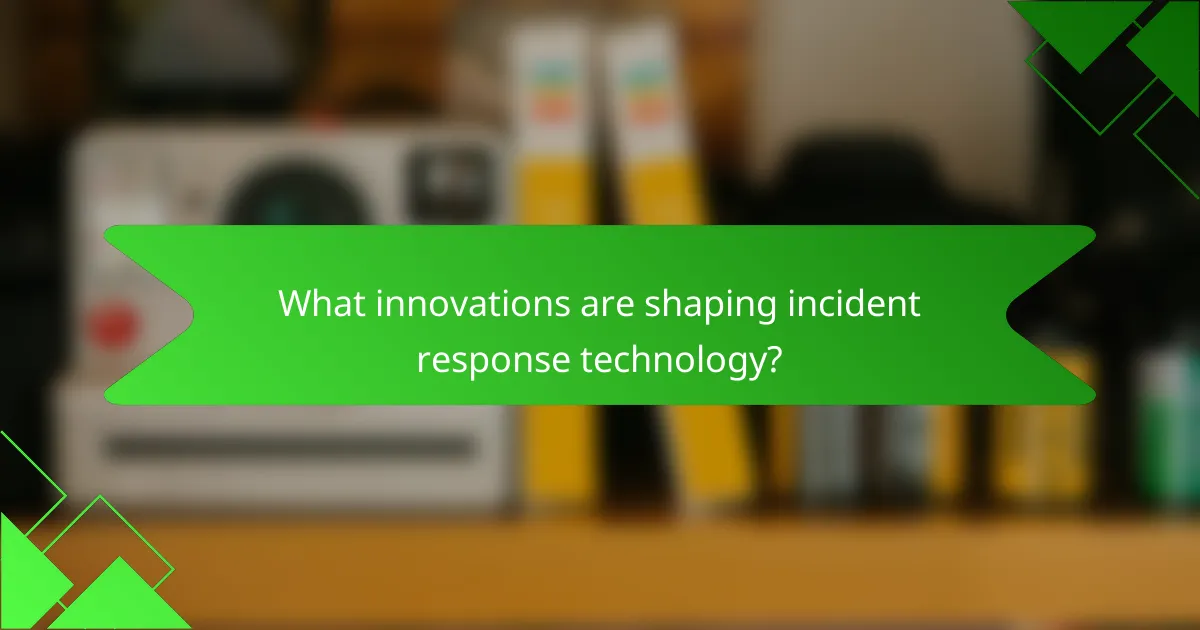
What innovations are shaping incident response technology?
Innovations in incident response technology are primarily driven by advancements in artificial intelligence, blockchain, and cloud computing. These technologies enhance the speed, security, and efficiency of responding to incidents, allowing organizations to mitigate risks more effectively.
AI and machine learning for predictive analysis
AI and machine learning are transforming incident response by enabling predictive analysis, which helps organizations anticipate potential threats before they occur. By analyzing historical data and identifying patterns, these technologies can provide insights that inform proactive measures.
For example, machine learning algorithms can detect anomalies in network traffic that may indicate a security breach. Organizations should consider integrating AI tools that continuously learn and adapt to new threats, improving their response capabilities over time.
Blockchain for secure data sharing
Blockchain technology enhances incident response by providing a secure and transparent method for data sharing among stakeholders. Its decentralized nature ensures that data integrity is maintained, which is crucial during an incident investigation.
Organizations can utilize blockchain to create immutable logs of incident data, making it easier to track changes and access historical information. When implementing blockchain solutions, it is essential to assess the scalability and interoperability with existing systems to maximize effectiveness.
Cloud-based incident response solutions
Cloud-based incident response solutions offer flexibility and scalability, allowing organizations to respond to incidents from anywhere. These solutions often come with built-in collaboration tools that facilitate communication among team members during an incident.
When choosing a cloud-based platform, organizations should evaluate factors such as data compliance with local regulations, service reliability, and the ability to integrate with existing security tools. Regularly updating and testing these solutions is key to ensuring they remain effective against evolving threats.
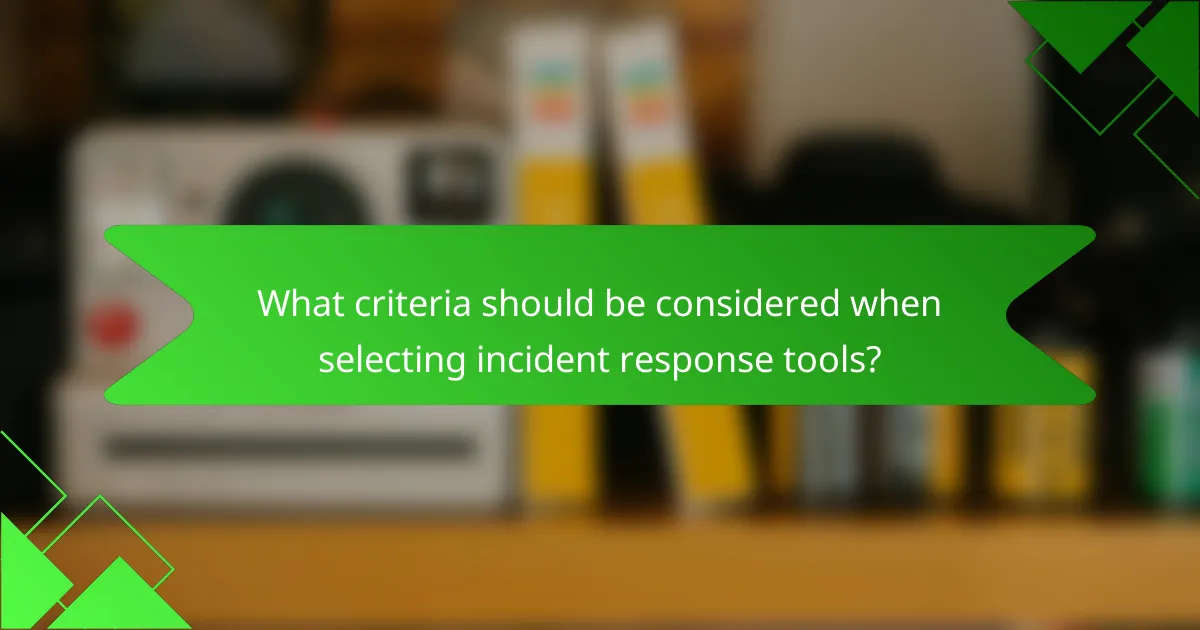
What criteria should be considered when selecting incident response tools?
When selecting incident response tools, organizations should consider factors such as scalability, integration capabilities, usability, and cost. These criteria ensure that the tools can effectively support the organization’s needs during incidents while aligning with existing workflows and budgets.
Scalability for growing organizations
Scalability is crucial for organizations anticipating growth, as it ensures that incident response tools can handle increased data volumes and user demands. Tools should be able to expand their functionalities without a complete overhaul, allowing for seamless upgrades as the organization evolves.
When evaluating scalability, consider whether the tool can accommodate additional users, integrate with new systems, and manage larger datasets. For example, a tool that supports modular features can be more beneficial than one with a fixed capacity, as it allows for tailored enhancements over time.
Integration capabilities with existing infrastructure
Integration capabilities are essential for ensuring that incident response tools work harmoniously with an organization’s current systems. Tools should be able to connect with existing security solutions, communication platforms, and data management systems to provide a cohesive response strategy.
Look for tools that offer APIs or built-in connectors for popular software solutions. This can significantly reduce the time and effort required for implementation. Additionally, consider how well the tool can share data across platforms to enhance situational awareness during incidents.


